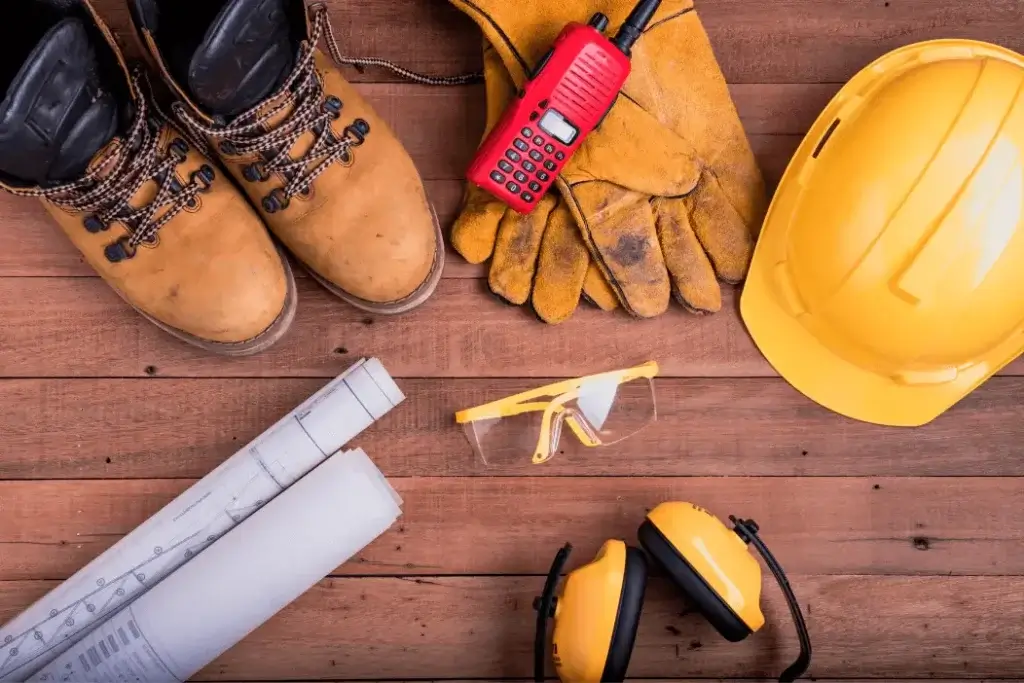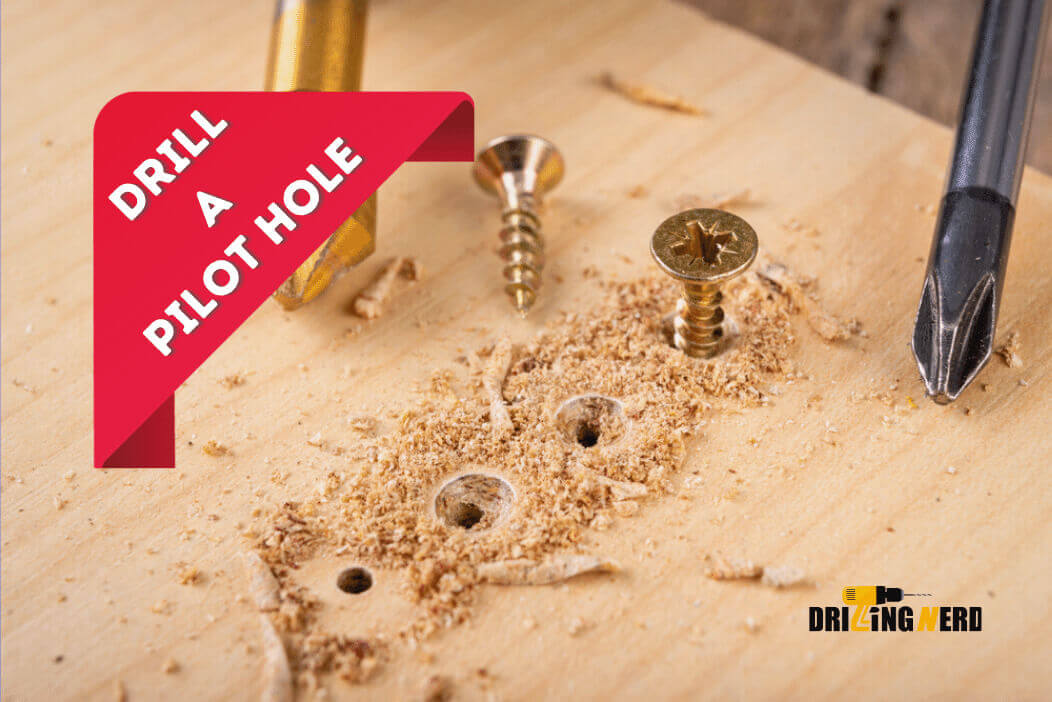Are you considering making modifications to your ceiling but need help figuring out how to get the process started? Have no fear; you’re not the only one! Drilling into a ceiling can seem impossible, but it’s far more accessible than it looks.
This article will examine all the specifics necessary for safely and effectively drilling into the ceiling. These specifics range from suggestions for pre-drilling preparation to the provision of methods for removing old ceiling materials.
When you have these instructions in front of you, you will discover that drilling holes in your ceiling are much less complicated than you had anticipated. Continue reading for helpful information on how to complete drilling jobs!
How to Drill Into Ceiling?

After you have completed the preliminary planning for your project, it is time to begin drilling into the ceiling. First, check that you have all the required protective equipment, including a dust mask, safety glasses, and ear protection. These items are very vital.
A masonry drill bit or a hammer drill bit should be installed in your drill. Hammer drills perform the best on older homes with ceilings that may contain lath and plaster, whereas masonry bits perform the best on more recent homes with ceilings made of drywall. First, you must ensure that your drill is equipped with the appropriate bit.
Place where you intend to install the anchor for your new fixture in the center of your drill’s working area. Make sure you have a firm hold on the drill with both hands; this will guarantee that your work is accurate and stable while you perform it.
Start the drill at a slow pace and press it into the ceiling; as the bit becomes more secure, gradually increase the speed of the drill. When you are drilling through, it is imperative that you maintain constant pressure.
After the hole has been drilled entirely through, you should pause and ensure it is sufficiently deep to accommodate the new fixture. If not, you will need to carry out the operation once more until you reach the appropriate level of depth.
Your ceiling has been successfully drilled into, so you are one step closer to finishing the home improvement project you have been working on. After completing just a few more uncomplicated actions, you will quickly have a lovely new addition.
Before continuing with other procedures, you should ensure that everything is straight by using a level or a measuring tape, if necessary. Using a vacuum cleaner, you may clear any dust or debris accumulated in the hole.
Before installing your new light fixture, ensure that the ceiling is clean; a moist cloth will work fine for this purpose. You’ll be able to go on to the next stage of your project as soon as everything is tidy and thoroughly dried.
Step-By-Step Guide to Drill into Ceiling:
Step 1: Get the Right Tools for the Job – A Drill, Screwdriver, and Ladder

When you have everything you need to complete the task, it’s time to start. You may start working on those do-it-yourself jobs around the house as soon as you have your drill, screwdriver, and ladder in your possession.
Step 2: Drill a Hole in the Center of the Ceiling Tile

Whether mounting a few picture frames or putting up a brand-new bookcase, having the appropriate tools at your disposal can ensure that everything goes off without a hitch. Before beginning any project, ensure you have the necessary tools and supplies!
After indicating where the hole should be, it is time to drill it! Make sure that the drill bit you use is suitable for the material of your ceiling tiles. After determining the drill bit to use, place the ceiling tile in the position you want, and then begin drilling holes. Always remember to protect your eyes by donning safety goggles!
After the hole has been completed, clean up any debris or dust that may have accumulated in the area. Now that everything is prepared, you can install your new lighting fixture with little trouble. Take pleasure in your newly illuminated space!
Don’t worry if you need help choosing a light fixture or think you won’t be able to do this DIY project; your successfully qualified electrician can assist you with both. They will be able to install any light fixture in a secure and precise manner, regardless of what you want.
Step 3: Screw in a Hook or Eyelet to Hold Up Your Light Fixture

After securing the eyelet or hook to the desired location, it is time to hang the fixture. To do this, a wire can be run from the fixture to the hook or eyelet and attached. Ensure the wire is fastened securely, so the light does not come unattached.
After you have connected the cable, you should wait sometime before ensuring that everything is in its appropriate and safe location. In addition to this, you need to inspect the wiring and ensure that everything is linked appropriately. When you have finished putting everything together, your light fixture should be ready for use!
Step 4: Reattach the Ceiling Tile Using either Adhesive or Screws

As soon as you have the ceiling tile in your possession, you may begin reattaching it. To complete the task, you will want some glue or screws. Be sure to affix the tile securely to the wall so that it won’t come to lose the next time someone passes by it!
To get anything to attach well, you need to apply the adhesive in a uniform layer and then push down on it in a way that is gentle yet forceful. If you are utilizing screws, check that to be the appropriate size, and then use a screwdriver to fasten them into position.
When you have finished attaching the tile, it should appear as nice as it was installed. You may quickly repair your ceiling and restore the room’s pristine appearance with little labor.
Safety Rules for Drilling:

Be cautious about protecting yourself using the appropriate safety gear, including hard helmets, face shields, and work boots. Put on long slacks and shirts with cuffs that cover your arms to stop debris from entering your clothes.
You should always use a drill with a complete comprehension of its operation and read the handbook before using it. When using power drills, looking closely for frayed wires and other damage symptoms is essential.
Please keep your hands away from the drill bit in operation to prevent accidental contact with its rotating components and sharp edges. Turn off the power supply before making adjustments or repairs to the drill.
This is especially important if you need to tweak something on the drill. Be careful to maintain a safe distance of at least ten feet from the drill bit while drilling operations are underway. If drilling in a confined space, wear the appropriate ventilation gear and keep entrances and windows open so that air may flow through the area.
In conclusion, it is imperative that you verify your work thoroughly before beginning any drilling operations. Before turning on the power, check to see that the drill has been correctly positioned and that all safety guards are in their appropriate places.
When dealing with power drills, taking these additional safety measures can help to guarantee that everyone stays out of harm’s way. Keeping these rules in mind when using drills will allow you to have an experience that is both fruitful and risk-free.
Tips for Drilling Into Ceiling:
As soon as you have the appropriate drill bit, it is time to begin drilling holes into the ceiling of your room. There are a few essential things to remember to guarantee that the task will be completed successfully and without incident.
- To begin, you need to make sure that you select the appropriate location on the ceiling for drilling. Because of this, any significant structural damage or interruption of other fittings will be avoided. In addition, check to see that your location is level and free of any impediments, such as pipes or cables.
- Second, you should secure your drill bit with clamps before drilling. This helps prevent your hands from sliding and reduces the pressure placed on them while carrying out the operation.
- Third, mark the spot where you wish to drill using a tape measure. Doing this enables you to guarantee precision throughout the procedure and assists you in avoiding any potential errors that may occur.
- Last but not least, ensure that you wear eye protection so that any dust or debris that may be formed during the drilling process does not get in your eyes.
If you follow these suggestions, you can make your drilling operation a success while minimizing any potential risks.
Frequently Asked Questions:
Bottom Line:
Now that you know the steps to safely and effectively drill into a ceiling, you can start tackling your next project with confidence. Make sure to check for wires and pipes before any drilling, and wear proper safety equipment. Drilling into a ceiling with the right tools and knowledge is relatively simple. Enjoy your newly improved space!









